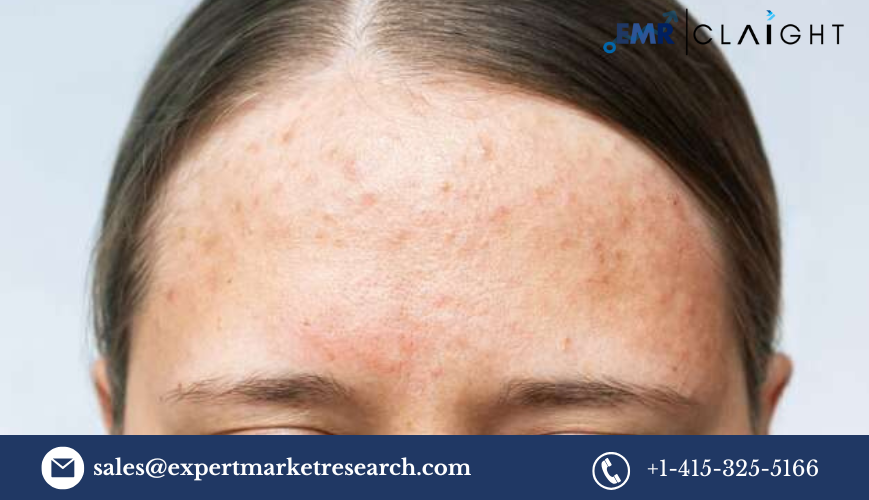Pigmentation disorders, such as melasma, vitiligo, hyperpigmentation, and post-inflammatory hyperpigmentation (PIH), occur when the production of melanin in the skin is disrupted, leading to uneven skin tone and discoloration. These conditions affect millions of people globally, causing not only aesthetic concerns but also emotional and psychological impacts. As awareness grows around skincare and dermatological solutions, the demand for treatments targeting these conditions is surging.
According to industry reports, the pigmentation disorder treatment market is projected to grow at a compound annual growth rate (CAGR) of 7.4% between 2024 and 2032. The rise in demand is driven by several factors, including an increasing number of pigmentation disorders, advancements in dermatological technologies, and consumer interest in achieving flawless, even-toned skin.
Key Drivers of Market Growth
1. Increased Prevalence of Pigmentation Disorders
Pigmentation disorders are becoming more common due to environmental factors such as excessive sun exposure, pollution, and hormonal changes. For example:
- Melasma is often triggered by hormonal changes, particularly during pregnancy or due to the use of birth control.
- Hyperpigmentation can occur as a result of skin damage, inflammation, or acne, which leaves behind dark marks or patches.
- Post-inflammatory hyperpigmentation (PIH) is especially prevalent in darker skin types, further driving demand for effective treatment options.
2. Advances in Treatment Technology
Dermatology has seen major innovations in recent years, offering more effective and safer solutions for pigmentation disorders. Treatments have evolved from basic topical solutions to sophisticated laser therapies, intense pulsed light (IPL) treatments, and microdermabrasion techniques that target deeper layers of the skin without causing significant downtime. These technologies are able to selectively target pigment while preserving surrounding tissues, thus improving results and reducing side effects.
3. Growing Demand for Aesthetic Solutions
The demand for cosmetic dermatology has seen exponential growth, particularly as more consumers seek minimally invasive procedures to enhance their appearance. Pigmentation disorders are not just a medical concern but also an aesthetic issue, prompting individuals to seek out treatments that provide both medical relief and cosmetic improvement.
4. Rise in Anti-Aging Treatments
As the global population ages, there is an increased demand for anti-aging treatments that address age-related pigmentation changes, such as age spots, sun damage, and uneven skin tone. The aging population, particularly in regions like North America and Europe, is a key driver for market growth as consumers seek to maintain a youthful complexion.
Deep Dive into Key Industry Players
1. SkinCeuticals International
SkinCeuticals is renowned for its science-backed, medical-grade skincare products, particularly its serums and topical treatments aimed at combating hyperpigmentation. The company focuses on developing solutions that combine antioxidants and brightening agents like vitamin C, niacinamide, and glycolic acid to reduce the appearance of pigmentation.
- Recent Developments: SkinCeuticals has been expanding its product lines to target specific skin concerns, such as pigmentation related to sun exposure and aging. The company’s ongoing research in topical formulations that combine active ingredients with advanced delivery systems has bolstered its market presence.
2. Pierre Fabre Laboratories
Pierre Fabre, a French pharmaceutical and dermocosmetic giant, has a significant presence in the pigmentation treatment space through its Melascreen product line, which focuses on hyperpigmentation and sun-damaged skin. Pierre Fabre’s products are often formulated with dermatologically tested ingredients designed for sensitive skin, making them accessible to a broad demographic.
- Strategic Investments: Pierre Fabre has been increasing its R&D investments to enhance the efficacy of its pigmentation treatments. The company is also involved in acquisitions and partnerships with research organizations to stay ahead of emerging trends in pigmentation treatment.
3. Obagi Medical Products Inc.
Obagi is a global leader in skincare products specifically designed for dermatological use. Its Nu-Derm System, a flagship product for treating hyperpigmentation, is widely recommended by dermatologists. The system utilizes hydroquinone and retinoids to effectively reduce pigmentation while promoting skin turnover.
- Focus on Innovation: Obagi continues to expand its product offerings, focusing on non-prescription formulations and natural alternatives to hydroquinone, which remains controversial due to potential side effects when used long-term. The company is also investing in digital healthcare platforms to enhance patient access to dermatological solutions.
Key Market Trends
1. Shift Toward Non-Invasive Treatments
Consumers increasingly prefer non-invasive and minimally invasive treatments that offer substantial results without the need for surgery. Treatments like Q-switched lasers, fractional lasers, and IPL therapy are becoming more popular because they can target pigment deep in the skin with precision. These treatments are particularly appealing due to their shorter recovery times and lower risk of complications compared to more invasive options like chemical peels or deep dermabrasion.
2. Personalized Skincare Solutions
One of the hottest trends in dermatology today is personalized skincare. With the rise of genetic testing and AI-driven diagnostics, treatments for pigmentation disorders are becoming more tailored to individual skin types and conditions. This approach not only improves treatment outcomes but also enhances patient satisfaction by addressing unique skin concerns more effectively.
3. Natural and Organic Ingredients
There is a growing consumer preference for natural and organic treatments that use plant-based ingredients with fewer chemicals. Ingredients like licorice root extract, kojic acid, niacinamide, and vitamin C are known for their skin-brightening properties and are increasingly being included in pigmentation treatment products. Consumers are drawn to these products because they offer fewer side effects compared to more aggressive treatments like hydroquinone or chemical peels.
Regional Analysis: Market Opportunities Across Geographies
1. North America
North America, especially the United States, leads the global market due to the presence of advanced healthcare infrastructure and high consumer awareness regarding skincare. The region is home to some of the world’s most prominent dermatology brands, and there is a growing focus on teledermatology, allowing patients to access treatment options remotely.
2. Europe
Europe is another key region driving market growth, with countries like Germany, France, and the UK seeing increased demand for anti-aging and pigmentation treatments. Europe’s regulatory environment, which emphasizes safety and efficacy, also plays a role in the widespread adoption of pigmentation treatments.
3. Asia-Pacific
The Asia-Pacific region is experiencing rapid growth due to a large population base, increasing disposable incomes, and a cultural emphasis on fair skin and even skin tone. Countries like China and India are seeing an increased incidence of pigmentation disorders due to sun exposure and pollution, making them significant markets for these treatments.
4. Latin America & Middle East
In Latin America, particularly in Brazil and Mexico, demand for pigmentation treatments is rising in tandem with the region’s expanding cosmetic dermatology sector. In the Middle East, there is growing interest in pigmentation treatment products and procedures as consumers prioritize aesthetic appearance and skincare.
Future Outlook and Conclusion
The future of the pigmentation disorder treatment market looks promising, with significant growth expected over the next decade. Key drivers such as technological advancements in laser therapy, increasing consumer demand for minimally invasive procedures, and the rise of personalized skincare will continue to push the market forward.
As more companies like SkinCeuticals, Pierre Fabre, and Obagi focus on innovation and expanding their product lines, the global market will see a rise in accessible and effective treatment options. With a forecasted CAGR of 7.4% between 2024 and 2032, the pigmentation disorder treatment market is set to offer exciting opportunities for both consumers and industry players.



